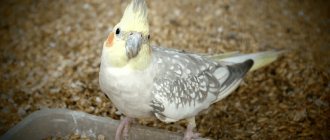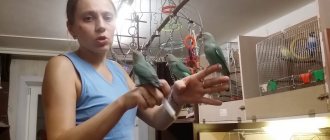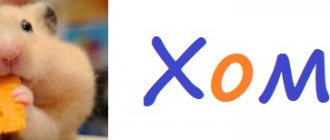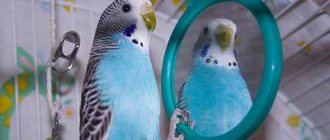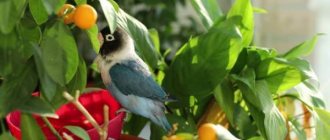Food from the table
Under no circumstances should you try to feed your budgie with human food prepared for its own feeding: soups, cereals, boiled or stewed vegetables, sweets, flour, fried foods, and the like are prohibited. Such products not only cause obesity for birds, but their long-term consumption leads to serious illnesses and then death. The same applies to products that have been in a person’s mouth. Saliva contains microorganisms that are dangerous to the parrot, so you should not feed the bird with such products.
Feeding "juice-eating" parrots
This group will include species of parrots from the loris subfamily. The most commonly kept species in captivity are the black lory (Chalcopsitta atra), the red lory (Eos borneo), the yellow-headed lorikeet (Trichoglossus euteles), the crowned lorikeet (Trichoglossus ornatus), the genus Domicella, and the crowned lory (Charmosina). They often contain pygmy and fig parrots (Psittaculirostris, Opopsitta).
A peculiarity of these species of parrots is the structure of the tongue, which has a tassel at the end formed from horny papillae. This structure of the tongue is an adaptation to feeding on flower nectar and tree sap. In addition to nectar and tree sap, these parrots feed on pollen, juicy sweet fruits and berries. In nature, they also eat insects and their larvae, seeds and plant shoots.
The set of food for this group of parrots in artificial conditions is varied and specific, we list some of them: sweet and juicy fruits, bread or boiled rice soaked in honey water, various juices, berries, soaked raisins, lightly sprouted sunflower and wheat seeds, all kinds of greens, flowering branches of fruit and berry crops, insects.
The main food for this group of parrots can be the following mixtures:
- Stir 6 tbsp in one liter of warm boiled water. l. infant formula (formula for children under 3 years old), 1 tbsp. l. honey, tbsp. l. glycerophosphate (or calcium gluconate). Store the product in the refrigerator. Feed the mixture in small portions.
- Flour is made from 4-6 grain components (rye, wheat, oatmeal, corn) taken in equal quantities. You can grind the beans in a coffee grinder. Add 2-3 types of fruits (apple, pear, banana) to the prepared flour mixture, minced through a meat grinder. The prepared mixture is stirred with a mixer with the addition of water, glucose and honey, minerals and vitamins. Approximate composition of the mixture in percentage: grain components - 40%, fruits - 40-50%, glucose or honey - 10-15%, additives - 3-5%.
Roasted seeds, salted nuts
Fried seeds and salted nuts are also strictly prohibited. During heat treatment, beneficial substances are destroyed, and during frying, harmful substances are produced, which can have negative consequences on the parrot’s body. Salt is poison for a parrot, and nuts are too fatty food for a feathered pet, so salted nuts are doubly harmful to the bird’s body. The required amount of nuts is contained in specialized grain feed. The parrot will not get better from them and will receive the necessary elements to maintain health.
When and how much to feed your parrot
One bird should receive two teaspoons of dry karma per day. Some people are gluttonous and demand much more. It is necessary to control the amount of food consumed as frilled parrots tend to become obese. It is recommended to divide the daily dose and give it to the birds in portions. Don't let widgen eat more than three tablespoons of the cereal mixture.
Carefully. Small birds have a faster metabolism. Lack of food can have negative and even fatal consequences. You can purchase an automatic feeder that will give food in portions.
Chocolate, milk, sweets
Chocolate and candies are very dangerous for budgies; even consuming them in small quantities can lead to the death of your pet. Since when birds eat chocolate, the proper functioning of the digestive system is disrupted, vomiting, diarrhea and dark-colored droppings appear. Then the functioning of the nervous system is disrupted, disorientation in space, hyperactivity, and irregular heartbeat are noted, which subsequently leads to death. Therefore, if your parrot is free flying in your apartment, carefully monitor whether there is a chocolate bar lying somewhere that the bird can try.
The same applies to other products containing sugar. Parrots can only be given a limited selection of fruits that contain natural sweetness; this will be enough for the bird’s body.
Milk and other products, such as cheese, yogurt, sour cream, butter or kefir, are not digested in the bird's body, since lactose is poorly tolerated by parrots. It can cause dysbiosis and other negative consequences.
Prohibited Products
There are a number of potentially poisonous foods that you need to be aware of.
This list is headed by clearly dangerous ones:
- tobacco;
- cane sugar;
- alcohol;
- caffeine.
There are also a number of products whose dangers are less obvious. Your parrot will eat those on the list below with pleasure, but this does not mean that they are good for him. And remember, don’t trust your pet’s judgment when it comes to what he wants to eat!
This group includes:
- dairy products;
- some vegetables and fruits;
- fats;
- salt and sugar;
- meat;
- seafood;
- pastry and bakery products.
Did you know? According to advertising, parrots really need granulated food. But in fact, some pets refuse to eat it at all, especially those who have been fed natural seeds since childhood.
Dairy
If a bird drinks milk only once, its body will cope with the load. But they are not designed to digest and absorb lactose on an ongoing basis. Therefore, they may experience loose stools within 24 hours of drinking milk.
Don't let this happen in the future. The only dairy product that is less dangerous is fermented yogurt. It contains bacteria that are beneficial to the parrot's stomach.
Read more about how to properly feed budgies.
Vegetables and fruits
Citrus fruits, including lemon and lime, contain a lot of citric acid. They are not poisonous, but the citric acid will cause stomach upset. The toxicity of onions and garlic to dogs and cats is well known. In any form, these vegetables are also toxic to birds. All parts of the avocado plant contain persin. This substance affects the functioning of the feathered friend’s heart and 12 hours after ingestion, the parrot may feel short of breath, and die from this toxin within 1-2 days.
The fruit pits are toxic enough to kill a budgie. Cherry, apricot, peach, apple and pear pits are potentially lethal due to their cyanide content. Your pet's beak is not strong enough to crack them, but if there are cracks in them, the parrot will take advantage of this and get to the contents. So just don't give him the bones.
Important! If you are trying to introduce your pet to a new type of food, offer it early in the morning. At this time, the parrot is hungry after a night's sleep and will be more loyal to the innovation.
Pets are prohibited from:
- green parts of the eggplant, they contain plant poison;
- beans - most of them are toxic to the parrot;
- peanuts (it may contain a fungus that is fatal to your pet);
- nutmeg;
- green tomatoes (red is fine);
- grapefruit;
- lemon;
- lime;
- mushrooms;
- onion;
- pear;
- potatoes (raw);
- garlic;
- rhubarb.
Fatty and fried
Butter contains a lot of cholesterol. Therefore, it is not very suitable for a pet, but it is not poisonous either. Simply, accumulating in the body, oil breakdown products will cause obesity. The problem is salt, which is necessarily present in any fat. This mineral is considered toxic and unsafe for most birds. As for fried foods, they do not exist in the natural environment. Therefore, you should not offer them.
Houseplants
Parrots should not be in the same room with such representatives of the aroid family as Dieffenbachia, Anthurium, Alocasia, Zamioculcas, Zantedeschia, Monstera, Colocasia, Spathiphyllum, Syngonium, Epipremnum and Philodendron. When approaching these plants, the parrot may develop swelling of the mucous membranes of the mouth and larynx. To prevent birds from eating plants, fence them off with curtains or blinds so that the feathered pet cannot get to the flower pots and taste the plants.
If you decide to feed your parrot foods other than their main food, make sure they are safe for your pet. Make a map of permitted and prohibited foods; if you cannot do this yourself, then contact a veterinarian who will tell you about the feeding habits of budgies. And then your feathered pet will be healthy and cheerful.
- Author: Elena Romanenko
Rate this article:
- 5
- 4
- 3
- 2
- 1
(4 votes, average: 3 out of 5)
Share with your friends!
Feeding "herbivorous" parrots
Most often in captivity, among the “herbivorous” parrots, they contain: white (Cacatua alba), small yellow-crested (Cacatua sulphurea) and pink cockatoo (Cacatua roseicapilla), budgerigar (Melopsittacus undulatus), song parrot (Psephotus haematonotus), rosella ( Platycercus eximius), cockatiel (Nymphicus hollandicus), Alexandrine ringnecked parakeet (Psitacula eupatria), rosy-cheeked lovebird (Agapornis roseicollis), African gray (Psittacus erithacus), Cuban (Amasona leucocephala) and blue-fronted amazon (Amasona aestiva), kalita parrot (Miyopsitta monachus ) , green-winged macaw (Ara chloroptera), soldier macaw (Ara ambigua) and other related species.
The basis of nutrition for this group of birds in artificial conditions is made up of various seeds: millet, oats, wheat, hemp, sunflower, corn, and all kinds of nuts. Fruits: apples, pears, oranges, bananas, as well as grapes, plums, cherries will serve as a good substitute for the natural food of parrots in nature. Vegetables can serve as good food: carrots, white cabbage, turnips, rutabaga. In the summer, the diet of parrots can be diversified with garden berries: currants, strawberries, raspberries, as well as forest fruits: blueberries, lingonberries, rowan, rose hips.
The diet of parrots should include products of animal origin: chicken eggs, boiled beef and chicken meat, cottage cheese, mealworms, ant pupae.
During the period of feeding their chicks, many species of Amazons, macaws and cockatoos eat well a mash consisting of 30% chicken egg, 30% minced meat, 10% raw (grated) carrots, 30% crushed white bread. Artificial vitamins and minerals can be added to this mash. Sometimes parrots refuse to eat food to which trace elements and vitamins have been added, so you need to carefully observe how parrots react to artificial additives. When making mash, it is necessary to take into account not only the species-specific, but also the individual characteristics of the birds. By using mash, you can feed many foods and medications that they would not eat if offered individually.
In captivity, parrots need to be given a variety of greens and tree branches. This low-calorie product is rich in vitamins and microelements. In summer, dandelions, lettuce, wood lice, cabbage leaves, flowering branches of fruit trees and shrubs can be used as green food. In late autumn and winter, you can give branches with buds of the same fruit plants, as well as willow, linden, rowan, and bird cherry. It is necessary to periodically germinate grains of wheat, barley, oats, sunflowers, and millet. Sprouted seeds are readily eaten by many species of parrots.
Minerals are necessary for the normal functioning of any organism. The most important elements are calcium, phosphorus and sodium. In order for birds to receive minerals and trace elements (manganese, iodine, ferrous sulfate, etc.), it is necessary to put calcium gluconate, glycerophosphate, crushed boiled chicken egg shells, bone meal, charcoal, etc. in a special container. A feeder with mineral products can be placed in the cage with a break of two to three days. We must not forget about gastroliths. River or sea sand, ranging in size from 1 to 5 millimeters in diameter, should be periodically present in the cage. During the breeding season, mineral elements can be mixed into soft food (mash).
Parrot poisoned: first aid
Emergency care when a parrot is poisoned is carried out by administering the drug in liquid form using a pipette or syringe. It is necessary to give the bird an adsorbent.
It can be:
- Activated carbon;
- polyphepane;
- enterosgel;
After the adsorbent, other drugs should be administered, as there may be no effect.
A decoction of flax seed and Glauber's salt are given as a laxative. If vomiting occurs, you should take 1 drop of Cerucala.
When there are disturbances in the liver (litter changes), you need to give your pet 1 tablet of Karsil per day . The tablet is also added to the food for 30 days after intoxication.
How to teach a parrot to eat fruit
When the chick is actively interested in everything around him, you need to start feeding him fruit. But what if you bought an adult with character? A wayward pet may stubbornly refuse succulent feeding, and this will have a bad effect on its health.
Like picky children, birds need to be introduced to new food gradually, patiently, unobtrusively. Experiment, act outside the box, be creative. There are many ways to outwit a cautious pet:
- Peel a ripe banana for your parrot, press grains from dry food into the pulp and place it between the bars of the cage. When pulling out familiar food with its beak, the pet will involuntarily try a banana.
- Chop or grate fruits, puree them, or squeeze out juice. Make fruit salads. Different shapes, textures and colors of food can attract birds.
- Mix small particles of fruit into the main feed. There is a chance that your ward will grab a new product along with the grain. Of course, such a mixture cannot be left in the feeder for a long time, otherwise it will spoil.
- Take the fruit holders, hang them and place them inside the cage. A parrot may mistake fruit kebabs on skewers for a toy. Perhaps, while playing, he will swallow a piece and taste it.
- Pour boiling water over dried apricots, prunes, dry apples, and figs. The bird may not like raw fruits, but it will love dried ones. Just not candied fruits - they contain a lot of sugar.
One of the easiest methods to introduce a bird to eating fruit is to organize collective feeding. In a single cage space, being close to its neighbors, the parrot will try to grab food before everyone else. It's okay if the cereal and juice fly all over the place. Some portion of the treat will still end up in the stomach.
Diet planning
Poor nutrition is the most well-known source of most health problems. Therefore, it is important to continually strive to improve your budgie's diet.
It must include:
- wild herbs and leaves;
- fresh seeds;
- vegetables fruits.
Budgerigars consume seeds both dry and sprouted. They also eat leaves, mainly of eucalyptus trees, on which they roost and nest. The seeds must be fresh as they have a limited shelf life. After this time, most of the nutrients will disappear. The same problem occurs if the seeds have been exposed to direct sunlight or heat.
Ready mixes
Budgerigars love ready-made nut and grain mixtures. Everything is clear with grain, the mixture can consist of corn, oats and wheat, rice mixed with millet. It is more difficult to make a nut mixture yourself, primarily because some types of nuts are contraindicated for budgies and any other representatives of the species.
Mixtures containing pistachios, pecans, sweet almonds and madacamia, and peanuts (need to be peeled) are considered ideal in composition and taste.
The parrot does not want to eat fruit: what is the reason
Parrots are curious, but they are afraid of new things. If the bird has never seen or tasted the fruit, it will be difficult to convince it to eat. No matter what form you offer the appetizing fruits, the bird simply ignores the treat. Also, not all fruits are readily eaten by a parrot when it is sick.
Birds in pet stores and on the market are most often kept in an economy mode: cheap food is used, the cage is rarely cleaned, and several birds live in crowded conditions. Constant stress causes a feeling of fear and wariness in birds. They are afraid to try something new, and they get used to a simple grain mixture.
What fruits can parrots eat?
Parrots can and should be fed fruits: they are rich in vitamins, sugars, fiber, and microelements. The list of permitted fruits is impressive; it contains most types of fruit crops. It is permissible to include in your daily diet:
Feel free to give pears to parrots and apples grown in local orchards. The peel contains concentrated nutrients, so it is not advisable to cut it off. Beautiful imported apples are also allowed, but the wax should be thoroughly washed off with hot water.
Pineapple is high in vitamins, but this fruit is not on the table very often, but only on occasion. You can occasionally treat your pet to a ripe piece. Watermelons and melons are harmless only in August and September. There is no need to remove small bones - birds love to crack them open. There is no reason to wonder whether a parrot can have an orange. Citrus fruits are a storehouse of vitamin C. Birds readily peck at the white subcortex and partitions, and do not disdain the juicy pulp.
You shouldn't take risks by offering papaya and mango to your bird. These fruits are picked unripe to extend their shelf life. They contain substances harmful to birds. But pomegranate is good for the intestines: if a feathered pet pecks at the peel, it will not have inflammatory processes.
What do parrots eat in the wild?
The diet of wild birds depends on their species and distribution area. For example, the hyacinth macaw parrot feeds mainly on palm nuts. And the remaining representatives of the genus eat mainly fruits and berries. Another connoisseur of palm nuts is the African Gray. It eats the fruits of red oil palms.
Many parrots in the wild eat grain, which provides them with carbohydrates. Birds eat almost all types of grains, including millet and oats. Additionally, their diet includes sesame, flax seeds, hemp and meadow grasses.
Some wild birds feed on shoots and branches. Moreover, many of them prefer young greens. Such food is easier to digest and contains more vitamins.
Almost all wild parrots feed on fruits and berries, which they consume in huge quantities. Depending on the birds' habitat, they can eat kiwi, pineapples, grapes, citrus fruits, bananas and apples. Moreover, birds, like people, feed only on the edible parts of fruits. Parrots eat everything except the seeds and stalks, and only occasionally peck the peel. Birds completely refuse fruits like mango, papaya, persimmon and avocado.
In conditions of shortage of berries and fruits, parrots feed on roots, tubers and bulbs of plants. Birds remove them from the ground using their paws and beaks. Representatives of large breeds feed on larvae and small insects. But such food is not the basis of the diet of any known species.
What else can you give?
Animal food is also useful for lovebirds, other birds kept at home, for example, birds are occasionally fed:
- kefir;
- fermented baked milk;
- curdled milk;
- yoghurts;
- children's fruit curds;
- cottage cheese.
You can add 1 drop of honey to the cottage cheese. Boiled chicken and quail eggs are also useful. Birds will not ignore grasshoppers and other living creatures, but it is better to purchase live food in specialized stores to avoid infecting birds with parasites.
